- Visiting Tokyo Disneyland with a Picky Eater - 15 October 2024
- USJ New Year’s Eve Countdown 2025 – What You Need to Know - 11 October 2024
- How to Beat The Crowds on the Hakone Loop - 10 October 2024
If you’ve decided to visit both Kyoto and Osaka on your Japan trip but have to decide which to stay in, which to visit for a day trip, or how to best split your time between the two, this post can help. It explains the differences between Kyoto and Osaka and helps you choose the perfect base.
Many people, on their first or second trip to Japan, decide to follow a path known as ‘the Golden Route’. This means staying a few days in Tokyo and then taking the bullet train down the country to visit Kyoto and Osaka. To do this and see all the main sights without rushing too much takes 10-14 days, and, ideally, you’ll spend 5-7 of those days between Kyoto and Osaka, spending a few nights in both. But if you have less time or don’t want to swap hotels too often, which is the better base – Kyoto or Osaka?
The questions that follow can help you decide …
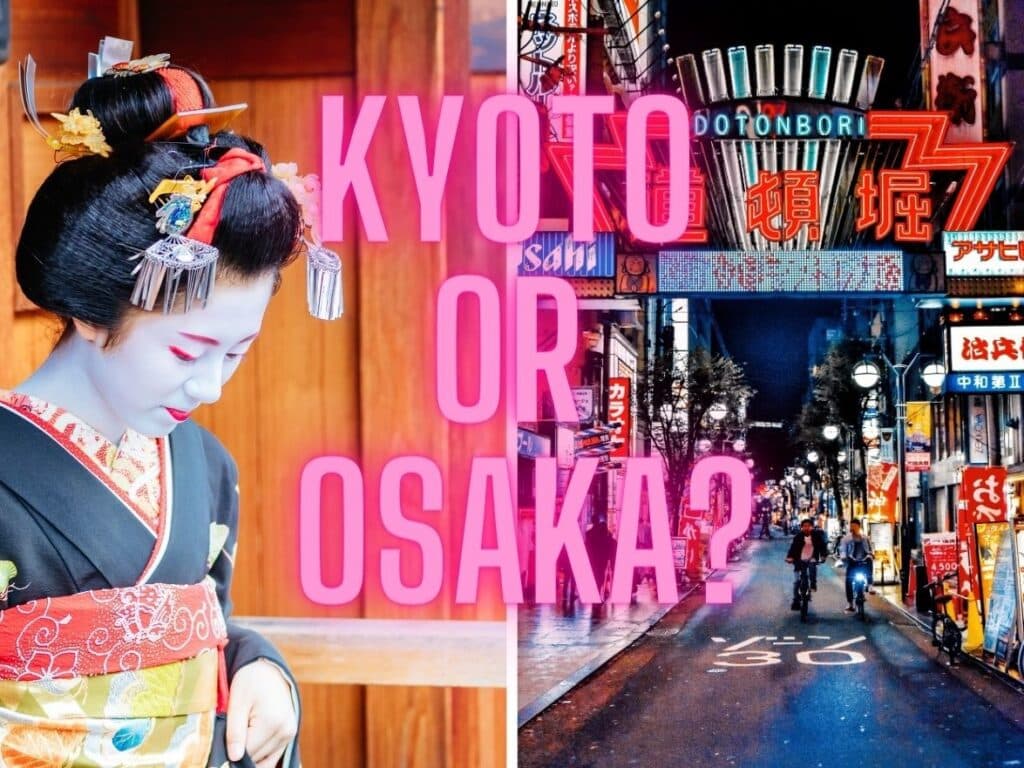
Article by Helen Foster. Disclosure: Some links in this post are affiliate links. See our Affiliate Disclosure.
I’ve tried to be as unbiased as possible here, even though I do have a favorite from the two cities, which I’ll reveal at the end, but these are the questions I think you need to ask yourself to decide whether Osaka and Kyoto is the perfect base for you.
Quick Differences Between Kyoto and Osaka
- Kyoto is the traditional Japan of your dreams. Osaka is more modern.
- Osaka is big on bars, restaurants, and partying. Kyoto is more refined.
- Osaka feels less touristy, Kyoto can get crowded
- Kyoto sights are more spread out, Osaka sights are compact
- Osaka is kitsch and fun, while Kyoto is beautiful, spiritual, and serious.
1. What Do You Want To See Most?
Each city has a distinct sightseeing vibe.
Kyoto has the big ticket items that you’ve probably seen on Instagram or every list of Japanese must-see sights – it’s full of jaw-dropping temples like the golden temple of Kinkaju-ji or Fushimi Inari with its hundreds of scarlet tori gates.
In town, there are winding alleys lined with homes, restaurants, and teahouses from years ago, and there’s always the enticing thought that you might see a geisha or maiko popping out from behind a curtained doorway of one of the small wooden buildings.
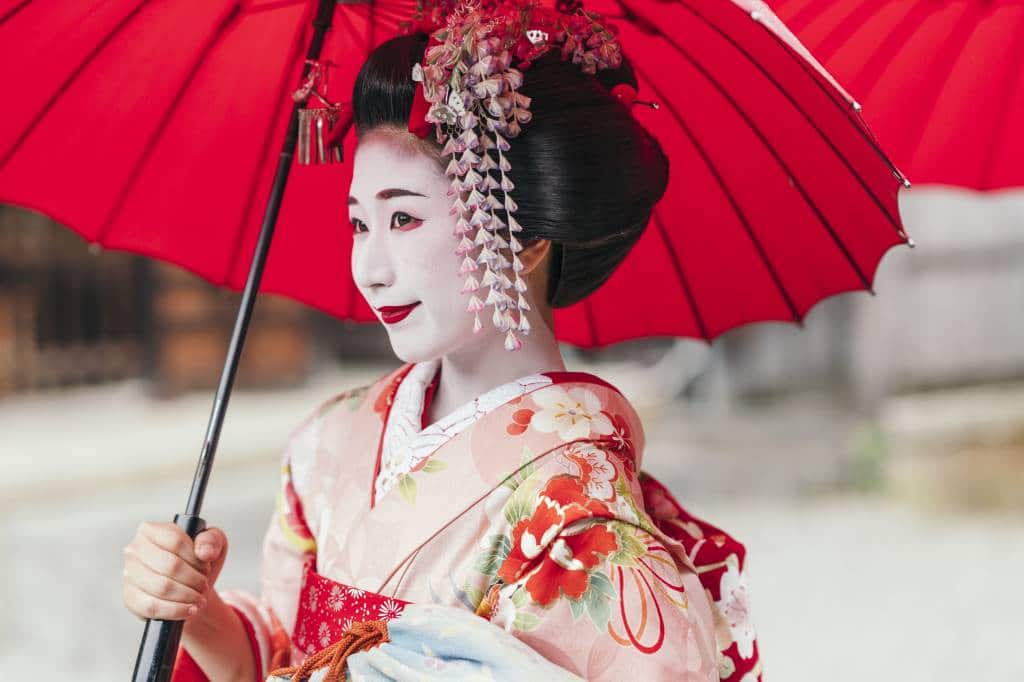
And I haven’t even touched on the full list of Kyoto attractions here; there are hundreds more.
If you love temples, Kyoto is also your happy place – there are 1600 of them, from the majestic to the tiny or quirky. But if you get templed out in a day or two, you might want to look at Osaka instead.
Osaka doesn’t have so many ‘wow’ sites (unless you’re traveling with kids – but more on that later). It actually has more temples than Kyoto, but they are small and subtle – like Hozen-ji with its interesting moss-covered sculpture or Namba Yasaka with its lion’s head design.
The biggest ‘historical’ site in Osaka is Osaka Castle.

But even though it doesn’t have the big wow sights, wandering around Osaka is more varied than Kyoto.
Each distinct district is different – one minute, you’ll be wandering around kitsch Shinsekai (above) with its garish signs and cute Billiken statues, then a short walk will lead you to Amerikamura and a few hours of wandering around vintage shops, checking out Japanese street fashion and maybe catching a live band or two.
If you love to wander and just absorb the feeling of different urban areas, I think you’ll love Osaka.
2. What Do You Want to Do in the Evening?
Osaka comes alive at night. Not only are the bright lights of Dotonbori one of the most famous – and fun – sights in Japan, the backstreets of every area team with bars and restaurants. Shops open late, and there are people everywhere.
You can spend each evening of a week-long trip wandering around a different city area at night and find heaps of places to eat and drink.
Osaka also has a great live music scene – look for clubs called Livehouses if you want to find local bands

Kyoto is not a great nighttime town – at least in the central area where most tourists spend their time.
Don’t get me wrong, there are hundreds of restaurants to choose from, you won’t starve, but it’s hard to just wander around trying to find something you like. I’ve never just stumbled across anything great in the center, and it tends to feel a bit hard. I usually end up ordering from one of my favorite Japanese chains instead.
One reason for this, for me at least, is that many restaurants in Kyoto, particularly in Gion and the very pretty Pontocho Alley, have closed-in fronts so it can be a bit hard to work out what’s going on inside and whether you’ll feel comfortable there – or that the bill isn’t going to come to hundreds of dollars.
One of the words I use to describe Kyoto quite often is impenetrable.
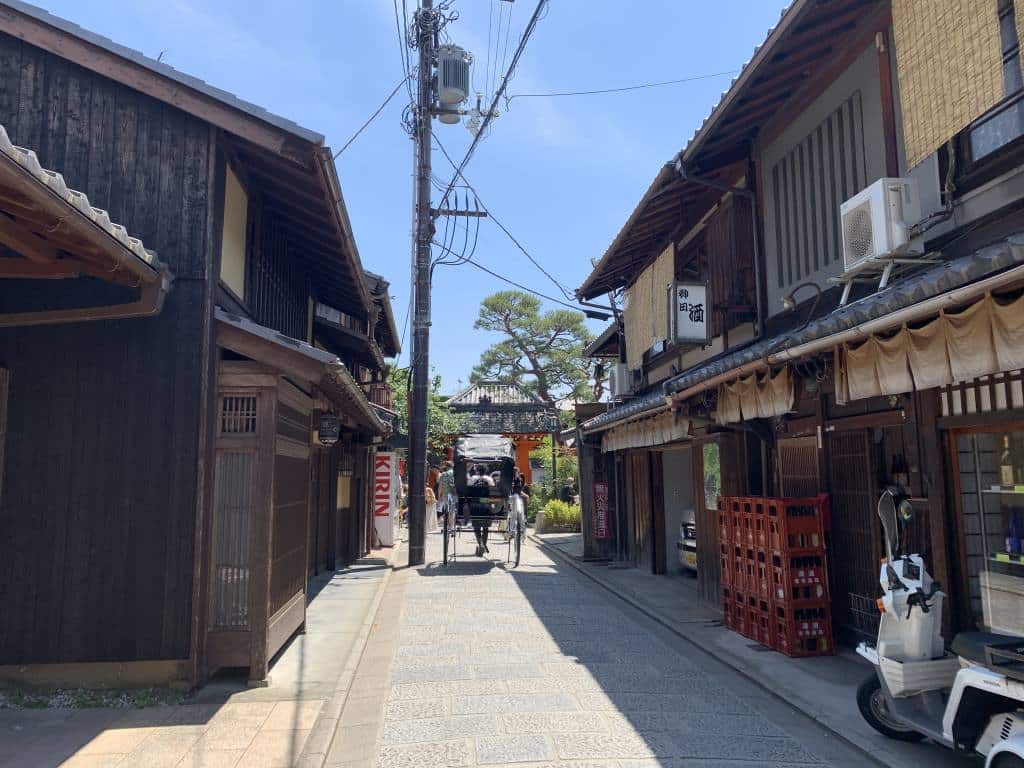
The downtown area is a little more open. I usually find somewhere to go on my budget, but nowhere has blown my socks off yet.
In Osaka, though, I don’t just find places to go. I find people to talk to and stories to tell when I get home.
I also think Osaka is a town for wanderers, for those who just want to see what takes their fancy as the night unfolds. Kyoto at night is a town for planners – you need to do your research and find out where you want to go – although, considering how packed the days are, that might not be a bad thing for your feet!
3. Are You Planning Lots of Day Trips?
Osaka has slightly more direct transport routes to most of the major day trip destinations. Here are some examples…
Getting from Shin-Osaka to Hiroshima is a direct journey of about 90 minutes. If you travel from Kyoto, you’ll need to change at Shin-Osaka, and it will take at least 15 minutes longer.
Getting to Nara from Kyoto is a simple 43-minute journey on the JR Nara Rapid Line. From Osaka, it takes 50 minutes to go from Osaka station (not Shin-Osaka) or 36 minutes to go from Osaka Namba to Kintestu Nara Station.
Getting to Kobe takes 25 minutes from Osaka station – and 55 minutes from Kyoto (via Osaka)
Getting to Himeji and its famous castle takes 30 minutes from Osaka station – and 56 minutes from Kyoto.

It’s not going to make much difference if you’re just doing one trip, or if your trip can be taken directly from both Osaka and Kyoto, but if you’re going out and about a few days from Kyoto, it can get tiring to keep changing trains at Osaka.

Need Extra Planning Help?
Our Japan trip planners can help. Choose from our 62-page Japan Super Planner, which includes tips on everything from picking hotels to sightseeing. Or, try a specific planner like Tokyo Tips, Kyoto Tips, or the Rail Pass Planner. Find them in our Planners store – printable and digital versions are available.
4. Do You Like Old or Modern?
This is probably the real deciding factor for most people.
Osaka is a modern city – all shiny lights and big glass buildings. It’s brash and busy and fun.
Kyoto, on the other hand, reflects the more traditional side of Japan. It’s the old capital and was one of the few cities in Japan not bombed in the war, so a lot of it is original and has a more elegant, sedate feel to the main tourist areas.
If you’ve already been to Tokyo, you might also love the change of feel and pace you get from staying in Kyoto.
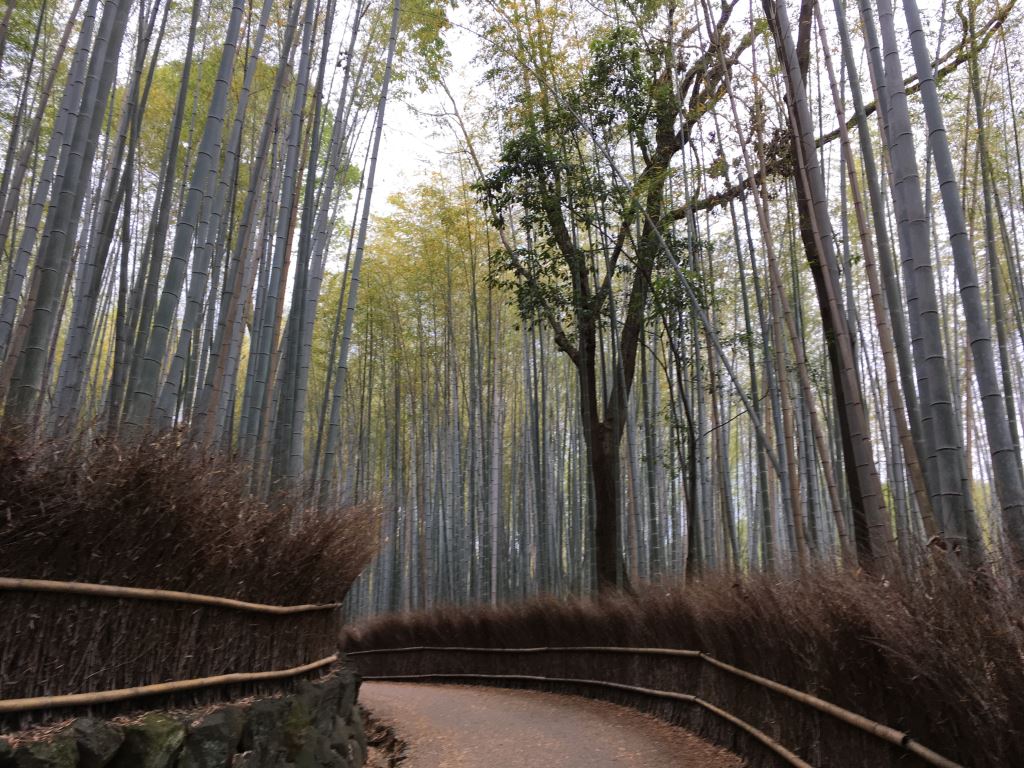
It also has more natural sights than Osaka, so if you need some greenery to recharge after Tokyo, it’s the perfect choice. But if you love the buzz of cities, crowds, and nightlife, Kyoto will feel like staying in a small town.
5. What’s Your Hotel Budget?
I have always thought Osaka was much cheaper than Kyoto for accommodation; every Japan group I belong to says the same thing – but on paper, at least, it seems I – and they – might be wrong!
If I directly compare the two hotels I had previously stayed in in each city (the Citadines Kyoto Karasuma Gojo in Kyoto or the Fraser Residence Nankai in Namba in Osaka) for the same night in November (five months after I’m typing this), the Fraser Residence is slightly cheaper.

I also compared apples with apples and looked at the Citadines Namba (that’s the room above) where I stayed on my last Osaka trip, and that too is slightly cheaper than the Citadines in Kyoto.
I also looked at the other hotel I stayed in on my last trip to Kyoto. Because I was traveling solo on this part of my trip, I didn’t need such a big room, so I picked the more budget, Sotetsu Fresa Inn Kyoto Karasuma Gojo.
I checked that for the same date in November as the above and found that this was about AU$50 cheaper than the Osaka equivalent Sotetsu Fresa Inn in Shinsaibashi.
That’s the double room below, and there’s also a desk and a chair out of shot!!
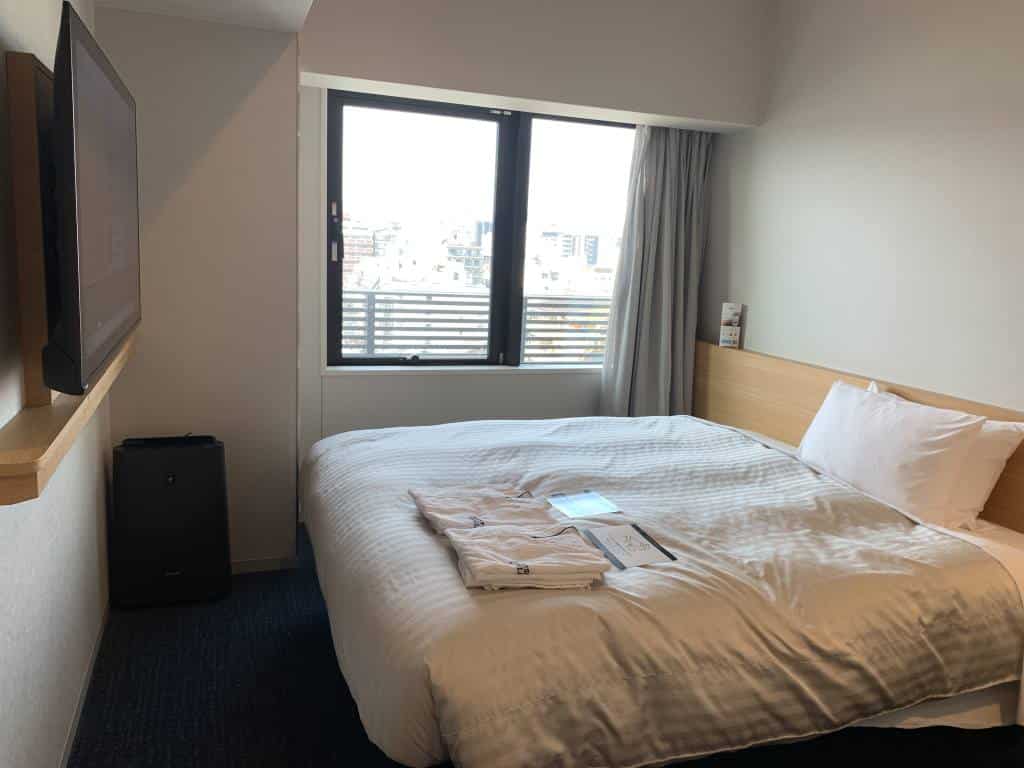
Kyoto is also more tuned to tourist seasons (check our guide on when to visit Kyoto for more details on what’s on when). If you’re traveling in cherry blossom season, autumn leaf season, or Golden Week (end of April, beginning of May), you might find staying in Osaka cheaper.
This might also all change in 2025 when Osaka is hosting the World Expo. That will see prices rise.
Obviously, prices will vary depending on exactly which hotel and area you want to stay in (see our suggestions of where to stay in Kyoto here). If you’re booking early, you could probably find something to suit your budget at any price in either city. I’d therefore say use the other questions to decide which city you prefer and then try and find a hotel that fits your budget.
6. Are You a Foodie?
Osaka names itself the foodie capital of Japan. If you want to nibble your way around a city, especially on a budget, then Osaka is the one to pick.
Dishes you shouldn’t miss include takoyaki (octopus balls), and okonomiyaki (a pancake you cook yourself), but there are lots more must-eats (we have 10 on this list of must-eats including a very unique ice cream)

Kyoto is probably less renowned for specific dishes than Osaka, but you’ll still eat well there, especially if you’re looking for high-end dishes. The Michelin Guide includes a few more restaurants in Kyoto than in Osaka. While the World’s 50 Best lists 10 bars and restaurants in Osaka. But it has 12 listings for Kyoto.
7. Do You Have Kids With You?
All kids are different, but Osaka has more obvious child-friendly attractions than Kyoto, not least because it’s home to Universal Studios Japan with its minions, Super Nintendo World, and the Wizarding World of Harry Potter. This alone is a good enough reason to base yourself in Osaka, as you’ll want to get to the park early to beat the crowds.
You’ll also find the Cup Noodle Museum, a huge aquarium, two skyscrapers with viewing decks, and the smaller but still cool Tsutenkaku Tower from which you can slide down to the ground.

This doesn’t mean Kyoto doesn’t have things for children—the Arashiyama Monkey Park is incredibly popular with children of all ages, the stone men at Otagi Netunbusi temple will entertain kids, and Yokai Street, which is full of models of Japanese monsters, can be fun. Still, Osaka has the big-ticket items.
Nara is also a great place to take children because of its ‘friendly’ deer – but as it’s just as easy to get to from Osaka as Kyoto, either destination works there.
8. Do You Hate Crowds?
You’re not going to get away from people in either city, but while the crowds in Kyoto tend to speak 15 different languages and peer at maps, the crowds in Osaka feel more local. It doesn’t always feel as much like a tourist town as Kyoto—I spent an afternoon in Spa World in Osaka and was the only foreigner there.
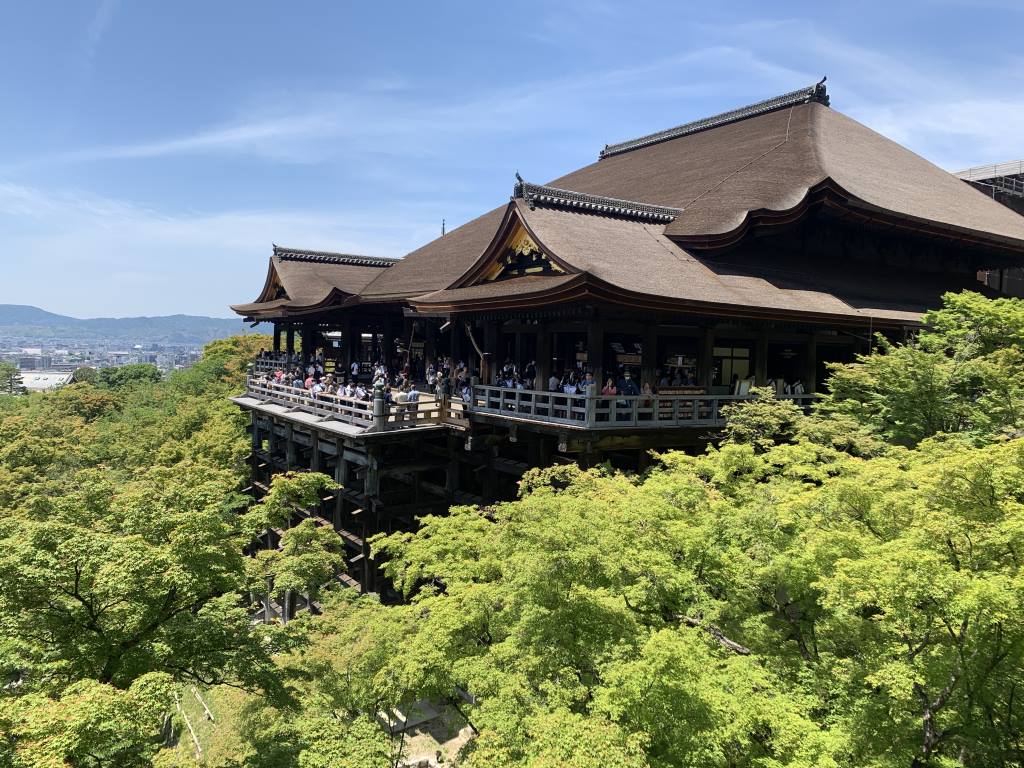
If you want to see the Kyoto sights with fewer crowds, you are better off staying in Kyoto and visiting the top sights first thing in the morning or, after the daytrippers have gone home (see more tips on avoiding the crowds in Kyoto here).
9. When Are You Traveling?
You might think this is weather-related, but the weather isn’t going to be a major factor in whether to stay in Osaka or Kyoto as they are so close; the general temperatures in both cities are likely to be very similar on any given day, but if you’re still undecided about which place to stay in, I think date might play a part in that final decision.
During busy times like the cherry blossom season or the peak of the autumn leaves, prices will rise in Kyoto. So if you’re on a budget, Osaka might be cheaper.
Conversely, if you hate crowds, you’ll want to base yourself in Kyoto take advantage of the quieter mornings and evenings.

If you’re thinking of staying in Osaka and day-tripping to Kyoto and want to see as much as possible, your day needs to be long so you can get to some of the big sights early in the morning or later in the evening.
That’s going to be easier in summer when sun rises at 5am.
Conversely, Osaka is more of a late-rising, late-night town, and you want it to be dark to see the lights, so if you’re traveling in winter, you might want to base yourself in Kyoto to catch as many sights as you can in daylight and head to Osaka later in the day.
My Choice Between Kyoto and Osaka …
Hopefully, the above has helped you make your decision, but if not. I’ve traveled to both Osaka and Kyoto three times each, and I have to admit, I have a favorite.
I love Osaka.
Why? I’m a wanderer. I don’t like to tick off big sights but find small details. I love photographing old Japanese buildings and not knowing what I’ll find around the corner. Despite all the history in Kyoto, I prefer the slightly more gritty neighborhoods of Osaka.
I also love anything kitsch and garish – so while I like Kyoto’s Nishiki Market, it was Osaka’s Kuramon Market, with its giant prawns hanging from the ceiling, that stole my heart.
The sight of the giant waving crab and the bright lights of Dotonbori make my heart sing, and I’m a big fan of wandering around Shinsekai.

Don’t get me wrong, the temples in Kyoto are beautiful – but I can only do two or three a day before temple fatigue sets in – and I really dislike the crowds.
I also don’t quite get Kyoto. So far, I’ve not really found anywhere that feels comfortable there for me. It’s either too touristy or too high-end. The closest I’ve come to enjoying Kyoto at night was in an area called Karasuma.
I have also never had a truly memorable night out in Kyoto (although I did spend an evening in a bar run by a monk that was interesting, if eye-wateringly expensive).
In Osaka, though, I ended up going to a karaoke bar (get the address in my Osaka itinerary) where we got talking to an English teacher, who invited us to an underground bar where we stayed until the sun came up.
She then invited us to an S&M bar the next night where she was performing (we sadly had to decline as I had nothing to wear for that little outing on my Japan packing list).

I intend to keep visiting Kyoto, though, in an attempt to develop the same love for it as I have for Osaka (well, that’s my excuse anyway).
So, there you have it – my guide on choosing whether to stay in Kyoto or Osaka. Did it help? Or do you have any more questions? Then, join our Facebook group and ask them there. I’ll do my best to help you out.
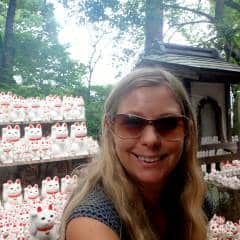
Who Writes This Blog?
My name is Helen Foster, and I’m a journalist and author. My travel articles have appeared in publications including The Australian, RAC Horizons, Jetstar Magazine, Sainsbury’s Magazine, and more.
I’ve traveled to Japan five times before- solo and with my partner – and I’ve just returned from trip six in June 2023. So, everything here is pretty up to date.


Thanks for great descriptions and advice.
Third time in Japan so we have done Mount Fuji, Hiroshima and Kyoto.
This time we plan to base in Osaka for a week, explore the city specifically for 2/3 days and travel around the area during the other days. Hotel booked.
I can’t find a guide to tell me day trips, just ones including overnights.
I love what you describe about Osaka but is there something more specific to what we want to do anywhere?
I haven’t done a specific Osaka day trips post (yet), but here’s a list of possible things to do in Osaka itself – https://japlanease.com/best-things-to-do-in-osaka/
As for possible day trips. Kyoto and Hiroshima are the obvious choices but you’ve done those, so other suggestions include Nara and Kobe (I will be doing posts on both of those when I get back from my next trip) and Himeji to see the castle.
I’m going on a day trip to Wakayama on my next trip – I’m going to see the cat stationmaster at Kishi, but it might be worth you seeing if there’s anything interesting for you around the town. Nachi Falls is the big attraction but it is probably a bit far in a day.
If you’re interested in Ninja history, then look at Iga – which I now want to add to my own itinerary!
Going a bit further afield,
If you like art, then you can do Naoshima as a (long) day trip from Osaka – this is from my other blog https://differentville.com/naoshima-pumpkin-art-island-in-one-day/
If you like animals, you might want to try Bunny Island – https://differentville.com/bunny-island-japan-guide/ Again it’s doable as a day trip but slightly long.
That might help to be getting on with. If nothing appeals from that lot though, tell me a bit more about what interests you and I’ll see what comes to mind.